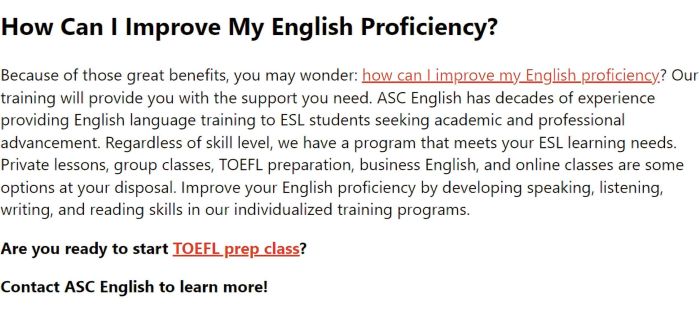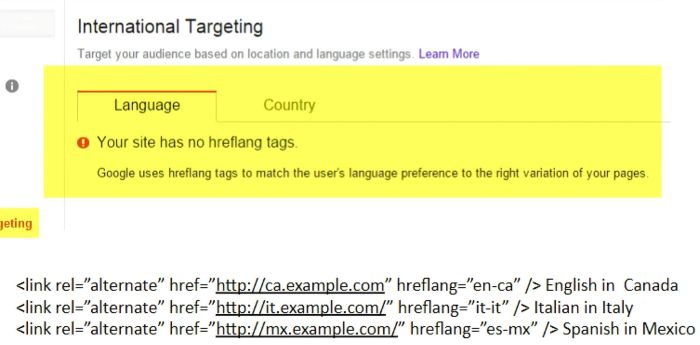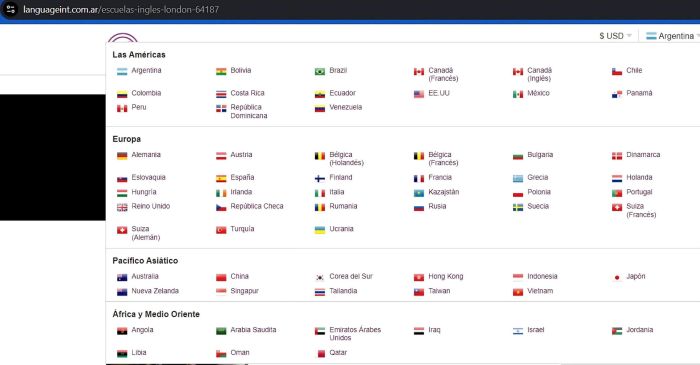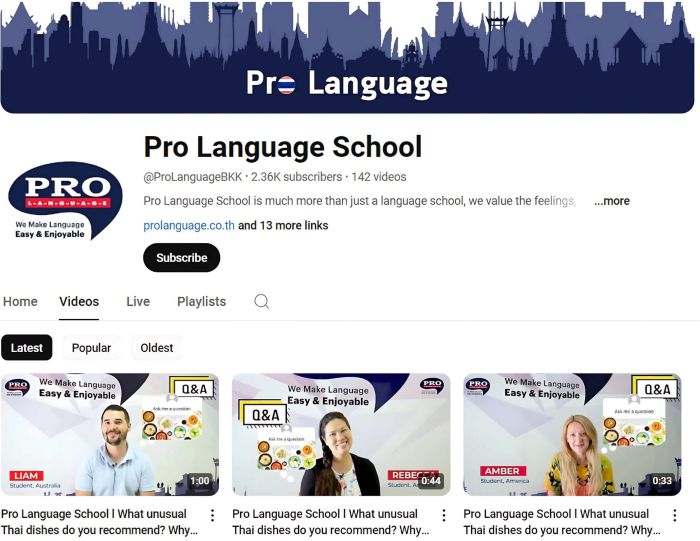As a school administrator or marketer, we know that your primary goal is to reach prospective students from around the globe and encourage them to enroll in your language programs. However, simply having a website is no longer enough. Language school SEO has become vital in ensuring your school stands out in a competitive online market.
Language schools face unique Search Engine Optimization (SEO) challenges compared to other educational institutions. Your audience is global, multilingual, and culturally diverse, and they may be searching for language learning opportunities using different search terms in different languages.
Additionally, the nature of language learning often involves regional variations, dialects, and nuanced preferences, which further complicates SEO efforts. However, these challenges also present opportunities. With the right SEO strategies tailored to language schools, you can significantly improve your website’s visibility and attract a broader range of students.
A Brief SEO Refresher
Before diving deeper into specific strategies for language school websites, it’s helpful to provide a quick refresher on SEO for those who may not be familiar with the term. Search Engine Optimization (SEO) refers to optimizing your website to improve its visibility on search engine results pages (SERPs). The better optimized your site is, the higher it will rank when people search for relevant terms or keywords related to your business.
SEO is primarily divided into two main areas: on-page and off-page SEO. On-page SEO involves optimizing elements of your website, such as page titles, meta descriptions, headings, and content, to ensure search engines understand the topic of each page. Off-page SEO focuses on activities outside your website that influence your rankings, such as earning backlinks from other reputable websites.
The ultimate goal of SEO is to drive organic (unpaid) traffic to your website by helping search engines like Google better understand your content and deem it valuable to users. Unlike paid advertising, which provides immediate but short-term results, SEO is a long-term strategy that can yield sustainable traffic growth over time when done correctly. Let’s explore strategies for effective language school SEO.
Do you need guidance on how to use SEO to boost your enrollment? Reach out to us!
The Unique SEO Challenges Faced by Language Schools
Language schools often struggle with SEO for a few key reasons. One of the most common issues is the multilingual nature of your audience. Prospective students are searching for programs in multiple languages, and your website may need to cater to them in both English and their native languages. However, search engines do not automatically rank pages in different languages unless the proper structure is in place. If your website isn’t optimized for these linguistic needs, you may be missing out on significant traffic.
Another major challenge is the highly competitive nature of the online language-learning market. In addition to competing with other language schools, you’re up against a myriad of online language learning platforms, apps, and free resources. This increased competition makes it even more difficult to achieve high rankings on search engines, especially for popular keywords like “learn English” or “Spanish courses.”
In addition to competition and multilingual challenges, many language schools target international students, which means optimizing for global SEO. This involves dealing with localized search terms, region-specific content, and cultural nuances that affect how people in different countries search for educational opportunities. Without the proper SEO strategies, your website may only reach a fraction of the audience it could.
Keyword Research and Optimization
How do you advertise a language school using SEO? Adjusting your website is a must. To effectively optimize your language school’s website, the first step is to conduct thorough keyword research. This is the foundation of any successful SEO strategy, and it’s particularly important for language schools because of the variety of search terms people may use to find your services.
Start by identifying the key languages that your audience speaks and conduct keyword research in those languages. For example, if you offer English courses to Spanish, French, and Mandarin speakers, you’ll need to identify the most popular search terms in each of those languages. Keep in mind that these terms may differ from their English equivalents. A term that is frequently used in English-speaking countries may not be as popular in non-English-speaking regions. Tools like Google Keyword Planner, Ahrefs, or Semrush can help you identify the most relevant terms for each language.
Once you’ve identified the most important keywords, it’s time to integrate them into your website’s content. The key to successful keyword optimization is to place these terms strategically throughout your site. This includes incorporating them in page titles, meta descriptions, headers, and throughout the body text of your pages. However, avoid keyword stuffing. Overloading your content with keywords will not only make it unreadable but could also result in penalties from search engines.
You should also consider long-tail keywords, which are more specific and less competitive than broader terms like “learn English.” For instance, instead of optimizing for “English courses,” try targeting phrases like “intensive English courses in London” or “business English for international students.” Long-tail keywords may have lower search volumes, but they often convert better because they attract more qualified leads.
Example: Here, ASC English utilizes long-tail keywords which are quite effective in targeting high-quality leads who are searching for specific answers to their language school questions.

Source: ASC English | Blog
Multilingual SEO: Catering to a Global Audience
What is an SEO strategy for education that helps schools to reach a global audience? One of the most important aspects of SEO for language schools is multilingual SEO. If your school attracts students from various countries, it’s essential to create content in their native languages. However, simply translating your website’s content is not enough. Search engines need to understand which language each page is in and who the target audience is. This is where implementing a multilingual SEO strategy becomes essential.
To ensure search engines properly index and rank your pages for each language, you’ll need to use the hreflang attribute. This tells search engines what language your content is in and which region it’s intended for. For example, if you offer English courses in both the United States and the UK, you’ll need to specify that the content is tailored to these regions, as the terms people use to search for courses may differ.
Example: Here are some examples of hreflang tags in website metadata that communicate to web crawlers that your content is tailored to specific geographical regions where a specific language is spoken. This is an essential strategy for global recruiting as a language school.

Source: HEM
It’s also crucial to consider localized keywords. Even within the same language, people from different regions may use different terms. For instance, while a prospective student from Spain may search for “aprender inglés,” a student from Mexico may use “clases de inglés.” Understanding these regional variations and incorporating them into your keyword strategy can help you attract a wider audience.
Another key consideration for multilingual SEO is ensuring that your website’s structure supports multiple languages. A common mistake language schools make is creating separate domains for each language. Instead, it’s generally more effective to use subdirectories or subdomains. For example, instead of creating an entirely separate website for your Spanish-speaking audience, you can create a subdirectory (e.g., “yoursite.com/es”) that houses all your Spanish-language content. This not only makes it easier for search engines to index your pages but also improves user experience.

Source: Language International
Example: Here, Language International tailors their site content to visitors in more than 40 different countries using hreflang tags.
Creating High-Quality, Engaging Content
Quality content is at the heart of any SEO strategy, and for language schools, this is especially true. Your website should be a valuable resource for prospective students, offering not only information about your programs but also insights into the language-learning process. High-quality content will not only help improve your rankings on search engines but also engage your audience and encourage them to take the next step, whether enrolling in a course or reaching out for more information.
Start by creating blog posts addressing prospects’ common questions and concerns. For example, you could write about the benefits of learning a new language, tips for mastering a difficult language like Mandarin, or success stories from former students. These topics are relevant to your audience and provide opportunities to incorporate keywords naturally.
In addition to blog posts, consider creating other types of content such as videos, infographics, and downloadable resources. Videos, in particular, are a great way to engage potential students and demonstrate your teaching style. You could create videos that offer mini-lessons, tours of your campus, or testimonials from satisfied students. These types of content provide value to your audience and can boost your search engine visibility. Search engines favor websites that offer a variety of media types, and high-quality videos are likely to generate backlinks, further improving your rankings.
Example: Here, Pro Language School, an educational institution that specializes in Thai language and culture, shares helpful and engaging content that would resonate with anyone who is interested in learning Thai or who may be simply curious about the region. As a language school, engaging video content is an excellent way to pique interest and warm up leads.

Source: Pro Language | Youtube
On-Page SEO: Optimizing Titles, Meta Descriptions, and URLs
While creating high-quality content is important, it’s equally important that your content is optimized for search engines. This is where on-page SEO comes into play. On-page SEO refers to the practice of optimizing individual pages on your website to improve their search engine rankings.
The first step in on-page SEO is optimizing your page titles. Your title is one of the most important ranking factors for search engines, so it’s crucial to include your target keywords in the title while keeping it engaging for users. For example, instead of a generic title like “Language Courses,” opt for something more specific like “Learn Spanish Fast: Intensive Courses at [Your School’s Name].”
Next, focus on your meta descriptions. Meta descriptions are the short snippets of text that appear below your page’s title in search engine results. While meta descriptions don’t directly impact rankings, they can influence click-through rates, which can, in turn, improve your overall SEO. Make sure your meta descriptions are concise, include your target keywords, and offer a compelling reason for users to click on your link.
Another important aspect of on-page SEO is optimizing your URLs. Short, descriptive URLs that include your target keywords are more likely to rank well and are easier for users to understand. For instance, a URL like “yourschool.com/learn-english-online” is much more effective than a URL with random numbers or letters.
Example: Here, in GT Educational Center’s metadata, you can see that titles and site content have been optimized for Google with the use of a long-tail keyword throughout.

Source: GT Educational Center
Building Backlinks and Improving Domain Authority
Backlinks, or links from other websites to yours, are one of the most important factors in determining your website’s authority and ranking potential. Search engines see backlinks as a vote of confidence in your content, and the more high-quality backlinks you have, the better your site will rank.
For language schools, building backlinks can be particularly challenging, but there are several strategies you can use. One effective method is to reach out to language learning blogs, forums, and educational websites to see if they would be willing to link to your content. Offering to write guest posts for these sites can also be a great way to earn backlinks while positioning yourself as an authority in the language-learning industry.
You should also encourage current and former students to share your content and link it back to your site. Testimonials, student success stories, and user-generated content can all be valuable assets in building your backlink profile. Additionally, list your school on educational directories and review sites. Not only do these provide valuable backlinks, but they also help improve your online visibility and reputation.
In conclusion, developing a strong SEO strategy for your language school’s website involves a combination of keyword optimization, multilingual SEO, high-quality content creation, on-page SEO, and backlink building. By focusing on these areas, you can improve your website’s visibility, attract more students, and stay ahead of the competition in the language learning market. While SEO can be challenging, especially for language schools with a global audience, the rewards of a well-optimized website are well worth the effort.
Expat Language Consulting. (n.d.). How to optimize your language school website for SEO success. Expat Language Consulting. Retrieved September 19, 2024, from https://expatlanguageconsulting.com
Ranktracker. (n.d.). SEO for language schools. Ranktracker. Retrieved September 19, 2024, from https://www.ranktracker.com
Semrush. (n.d.). Multilingual SEO: What it is & how to do it. Semrush. Retrieved September 19, 2024, from https://www.semrush.com
Think Orion. (2023). SEO for schools: The ultimate guide for 2024. Think Orion. Retrieved September 19, 2024, from https://www.thinkorion.com
WebFX. (n.d.). SEO tips for online education: Reach students with SEO. WebFX. Retrieved September 19, 2024, from https://www.webfx.com
–
Frequently Asked Questions
Question: What is an SEO strategy for education that helps schools to reach a global audience?
Answer: One of the most important aspects of SEO for language schools is multilingual SEO. If your school attracts students from various countries, it’s essential to create content in their native languages.
Question: How do you advertise a language school using SEO?
Answer: Adjusting your website is a must. To effectively optimize your language school’s website, the first step is to conduct thorough keyword research.







